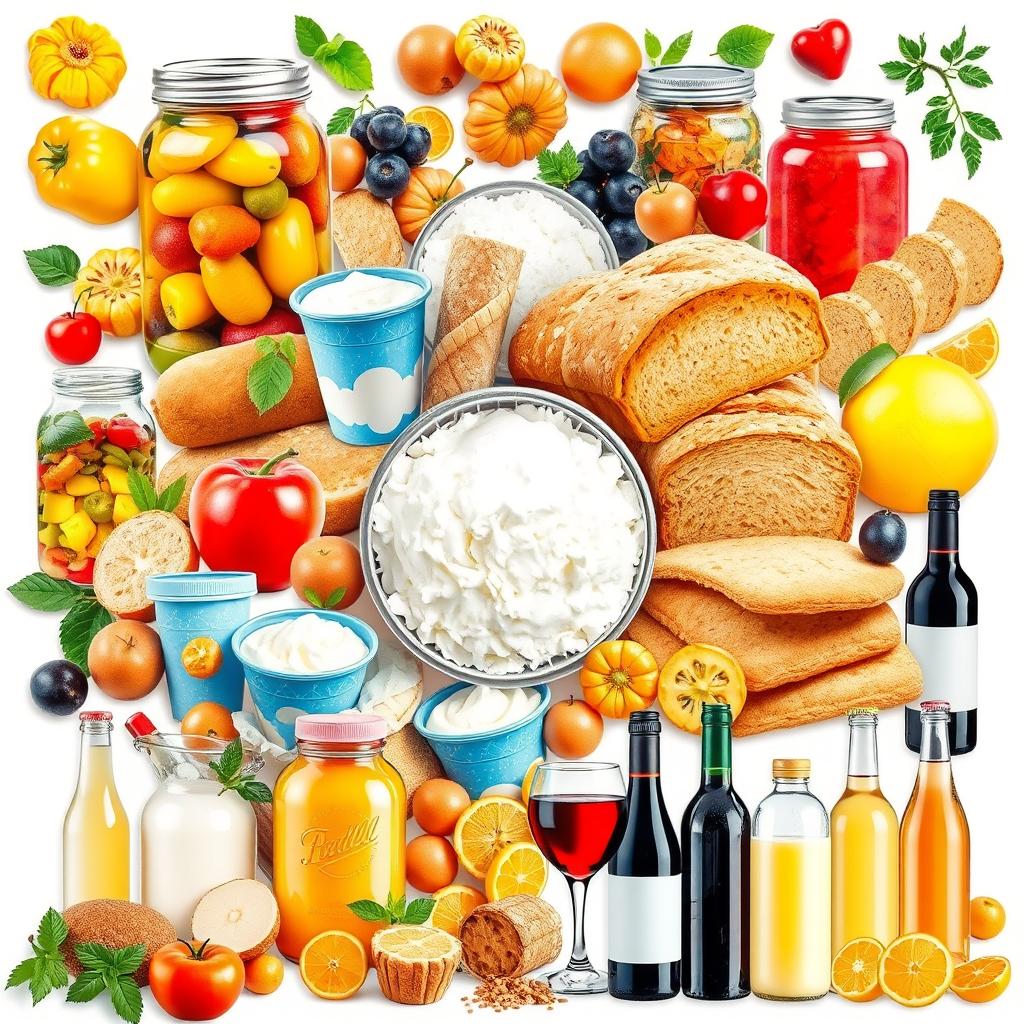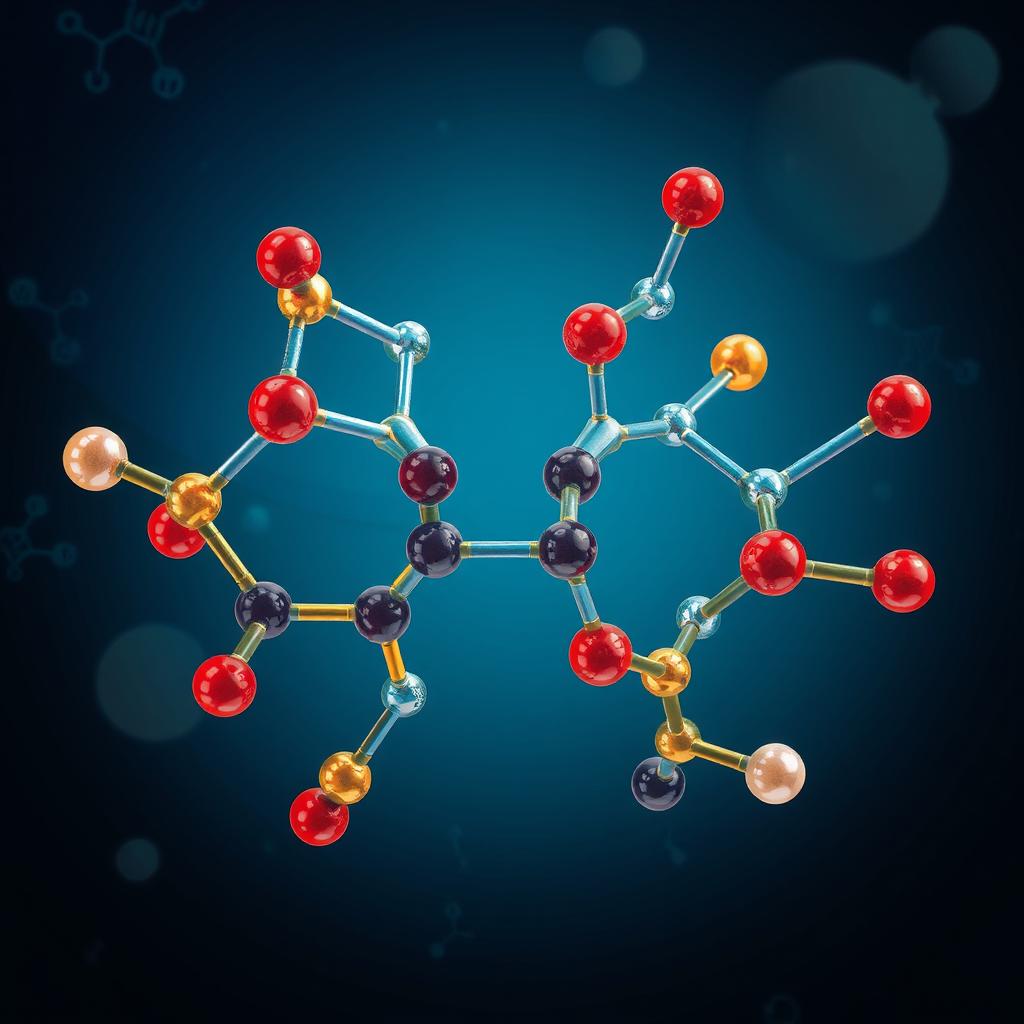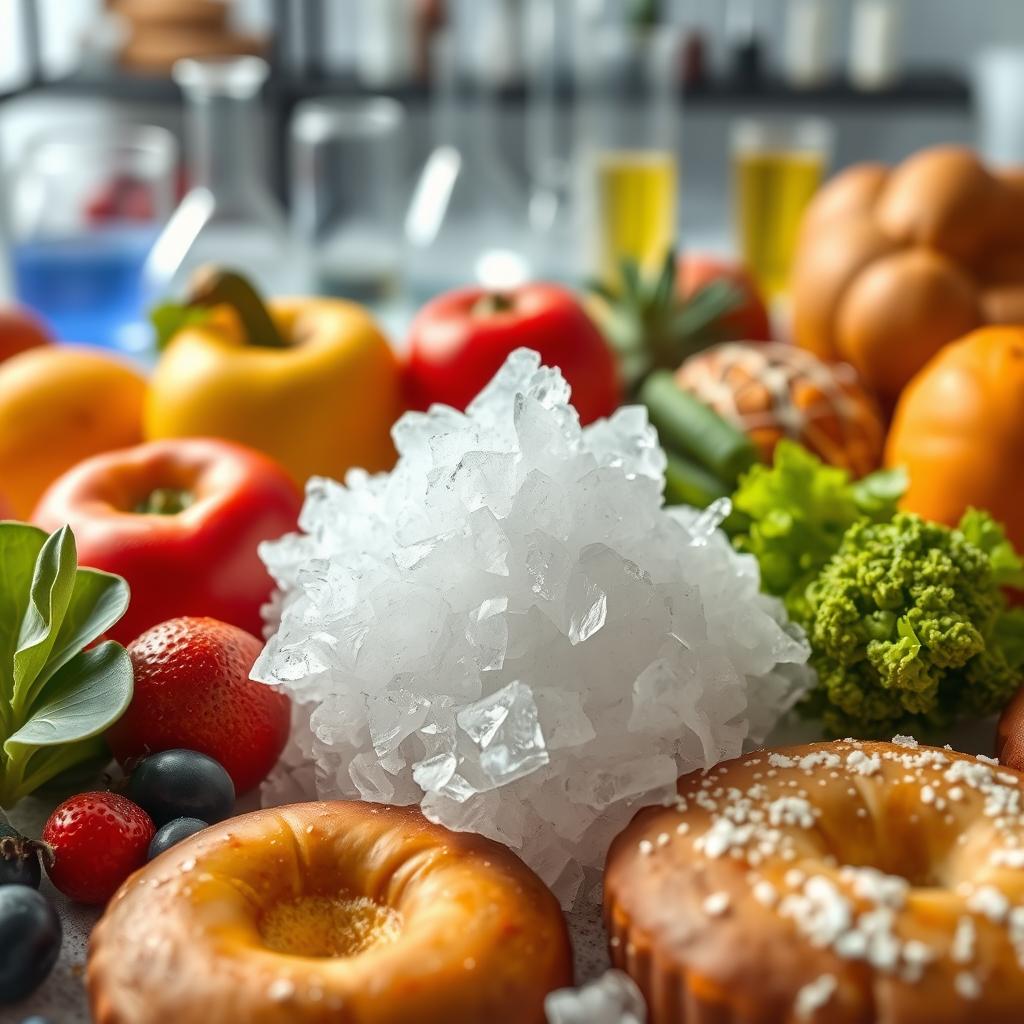What happens when we add potassium sorbate, a food preservative, to our food? Does it always work, or can it fail? This chemical is used to keep food fresh longer. But how much is safe, and what risks might it pose? It’s important to know how potassium sorbate works and its risks. As a preservative, it stops microorganisms from growing in food. But its success depends on several things. Its use has also raised health concerns.
Click to use Silverigroup personal shopper services
Key Takeaways:
- Potassium sorbate is a widely used food preservative that extends the shelf life of various products
- Its effectiveness depends on factors such as pH level, temperature, and concentration
- Potassium sorbate can be used in a variety of applications, including beverages, baked goods, and dairy products
- The use of potassium sorbate has raised concerns about its potential impact on human health
- Understanding the limitations and potential risks associated with potassium sorbate is crucial for consumers and manufacturers
- Potassium sorbate is a chemical compound that requires careful handling and storage to ensure its effectiveness and safety
Understanding Potassium Sorbate: A Food Preservative Overview
Potassium sorbate is a food preservative used for decades. It stops mold, yeast, and bacteria from growing in food. This helps keep food fresh longer and safe to eat. Knowing how it works, its side effects, and how to store it is key to its safe use.
Click to buy citric acid from Silvairgroup
The chemical makeup of potassium sorbate helps stop microorganisms from growing. It’s important to store it right to avoid side effects. Keep it in a cool, dry spot and handle it carefully to prevent contamination.
Chemical Structure and Properties
Potassium sorbate’s chemical makeup makes it great for preserving food. It works by damaging the cell walls of microorganisms, killing them. This keeps food from spoiling and extends its shelf life.
Natural vs. Synthetic Sources
Potassium sorbate comes from natural sources like mountain ash berries or is made synthetically. Both types work well, but natural sources might be more appealing to some. They see it as safer and better for the environment.
Historical Development and Use
Potassium sorbate has been around for centuries, first used in ancient Rome. Today, it’s used in many foods, from drinks to baked goods. Storing and handling it correctly is crucial for its effectiveness and safety.
Click to buy frozen a grade beluga fish from Silverigroup
Learning about potassium sorbate helps everyone understand its role in food. It’s about knowing its chemical makeup, where it comes from, and its history. This knowledge ensures food stays safe and of good quality.
The Science Behind Potassium Sorbate’s Preservation Action
Potassium sorbate is a key food preservative that helps keep food fresh longer. It stops the growth of harmful microorganisms. This makes it vital in many applications, from drinks to baked goods.
This preservative works by stopping yeast, mold, and bacteria from growing. It does this by making their environment less friendly. This way, food stays fresh for longer. Potassium sorbate is used in many applications, including:
- Beverages, such as wine and juice
- Baked goods, such as bread and cakes
- Dairy products, such as cheese and yogurt
Studies show that potassium sorbate kills microorganisms by damaging their cell membranes. This makes it a powerful food preservative in many applications. In summary, potassium sorbate’s power comes from stopping microorganisms from growing. It’s a widely used food preservative in many applications.
| Food Product | Potassium Sorbate Concentration |
|---|---|
| Beverages | 0.1-0.3% |
| Baked Goods | 0.2-0.5% |
| Dairy Products | 0.1-0.2% |
Common Applications in Food Industry
Potassium sorbate is a key preservative in the food industry. It’s used in many products, like beverages, baked goods, and dairy items. This helps keep food fresh for longer and reduces spoilage risks.
In the food world, potassium sorbate stops mold, yeast, and bacteria from growing. This is crucial for drinks like wine, beer, and juice. It also helps keep bread, cakes, and pastries fresh by stopping mold and bacteria.
Beverages and Liquid Products
Potassium sorbate is a go-to for making drinks. It keeps wine, beer, and juice from spoiling. This ensures the quality stays high.
Baked Goods and Confectionery
It’s also used in baked items. Bread, cakes, and pastries get a longer shelf life. This is thanks to potassium sorbate’s mold and bacteria prevention.

Dairy Products and Alternatives
Potassium sorbate is used in dairy too. It’s in cheese, yogurt, and milk. It stops mold, yeast, and bacteria, keeping these products fresh.
How Potassium Sorbate Works at the Molecular Level
Potassium sorbate is a chemical compound used as a food preservative. It stops microbes from growing by working at the molecular level. Knowing how it works helps us understand its benefits and possible side effects.
Studies show potassium sorbate kills microbes by messing with their cells. It gets into the cell membrane and stops the microbe from working right. This leads to the microbe’s death. Using potassium sorbate in food has many advantages. It:
- Extends shelf life
- Stops microbes from growing
- Prevents food from spoiling
But, we must think about the side effects it can cause. Some people might be allergic or intolerant to it. This shows we need to be careful when using it in food. In summary, potassium sorbate is great for keeping food fresh and safe. It works by messing with microbes at a molecular level. Knowing how it works and its side effects helps us use it wisely and safely.

Effectiveness Factors and Limitations
Potassium Sorbate works well as a preservative under certain conditions. These include pH levels, temperature, and the environment. These factors help it stop food from spoiling and keep it safe to eat. Following safety rules and keeping food in the right storage is key. For example, pH levels can change how well Potassium Sorbate stops bacteria and mold.
pH Dependencies
The pH of food greatly affects Potassium Sorbate’s success. It works best when the pH is between 3.0 and 5.5.
Temperature Considerations
Temperature also plays a big role. High heat can weaken Potassium Sorbate’s power. But, cooler temperatures slow down bacteria and mold growth.
Environmental Factors
Things like humidity and light can also affect Potassium Sorbate. Keeping food in a cool, dry place is important. This helps the preservative work well and keeps food safety in different applications. Knowing these factors and taking the right steps helps food makers use Potassium Sorbate effectively. This way, they can keep their products high in quality and safety.
Safe Usage Levels and Regulations
Using potassium sorbate as a food preservative requires careful attention. It’s important to follow safe usage levels and stick to regulations. Various regulatory bodies around the world have rules for its use in food.
Here are some key points to remember:
- Maximum allowed levels of potassium sorbate in foods differ by country and product type.
- Food labels must show if potassium sorbate is used as a preservative.
- Following Good Manufacturing Practices (GMPs) is crucial for safe handling and use.
Food makers must know and follow these regulations to keep consumers safe. This way, they avoid legal problems. By doing so, potassium sorbate can be used effectively as a food preservative.

When Potassium Sorbate Fails: Understanding the Limitations
Potassium sorbate is a common food preservative. But, it’s not perfect. Knowing when it fails is key to keeping food safe and good to eat. Its side effects can be big, so it’s important to think about them. Potassium sorbate can’t fight off all bad microbes. Some bacteria and mold can get used to it and ignore it. This can cause food to spoil and get contaminated. Also, how it works with other ingredients can change its power, making it important to use it carefully.
Common Limitations of Potassium Sorbate
- Resistant microorganisms: Certain bacteria and mold can develop a tolerance to potassium sorbate, reducing its effectiveness.
- Chemical interactions: Interactions between potassium sorbate and other ingredients can impact its ability to preserve food.
- Processing mistakes: Errors in the manufacturing process can also limit the effectiveness of potassium sorbate, emphasizing the importance of proper handling and storage to ensure safety.
When using potassium sorbate, we must think about its limits. Knowing its side effects and safety issues helps makers make better choices. They might use it with other preservatives or find new ways to make it work better.

Storage and Handling Guidelines
To keep Potassium Sorbate effective and safe, it’s important to follow storage and handling tips. Store it in a cool, dry place to avoid damage or contamination. This is key to keeping its uses in various industries safe and effective.
When handling Potassium Sorbate, safety is a top priority. Avoid touching it with your skin, eyes, or breathing it in. Always wear gloves and goggles to protect yourself. The right storage and handling of Potassium Sorbate are crucial for the quality and safety of the final product.
Proper Storage Conditions
- Store in a cool, dry place, away from direct sunlight
- Avoid exposure to moisture and humidity
- Keep containers tightly sealed to prevent contamination
Shelf Life Considerations
Potassium Sorbate lasts a long time when stored correctly. But, its power can fade over time. Always check the expiration date before using it. Proper storage and handling are key to keeping Potassium Sorbate effective for a long time. By following these guidelines, you can safely store and handle Potassium Sorbate. This keeps its quality high and extends its shelf life. This, in turn, improves the safety and quality of the final product, whether it’s food, drinks, or other uses.
| Storage Conditions | Shelf Life |
|---|---|
| Cool, dry place | Up to 2 years |
| Exposure to moisture and humidity | Reduced to 6 months |
Health and Safety Considerations
Using Potassium Sorbate as a food preservative is all about health and safety. It’s a chemical compound with both benefits and risks. Studies show it’s mostly safe, but some people might get skin irritation or allergic reactions.
When using Potassium Sorbate, safety is key. You should wear gloves and goggles to protect yourself. Also, make sure to store and dispose of it correctly to avoid accidents or harming the environment. Some important health and safety tips include:
- Stick to the recommended amounts to avoid too much exposure
- Do regular risk checks to spot any dangers
- Make sure everyone knows how to handle and use Potassium Sorbate safely
Potassium Sorbate is useful in the food world, but we must always put health and safety first. By being careful and following the rules, we can use it safely and keep our environment healthy. Remember, Potassium Sorbate can affect people differently. Always talk to a doctor or a food safety expert if you have concerns.
| Chemical Compound | Health Effects | Safety Precautions |
|---|---|---|
| Potassium Sorbate | Generally considered safe, but can cause skin irritation or allergic reactions | Handle with care, wear protective gear, follow proper storage and disposal procedures |
Alternative Preservation Methods
The food industry is always looking for new ways to keep food fresh. Potassium Sorbate is not the only option anymore. Now, there are natural and chemical alternatives, as well as systems that use both. These can be used in drinks, baked goods, and dairy products.
Natural Alternatives
Instead of Potassium Sorbate, people are turning to plant-based preservatives like rosemary extract and grape seed extract. These are seen as safer and better for the environment. Some popular natural options include:
- Plant-based preservatives
- Essential oils
- Organic acids
Chemical Substitutes
For those who prefer synthetic options, there are substitutes like sodium benzoate and calcium propionate. These work similarly to Potassium Sorbate and are used in many food products.
Combined Preservation Systems
Using more than one method to preserve food is becoming common. This can mean combining natural and chemical options with techniques like refrigeration and special packaging. This approach helps keep food safe and of high quality, while using fewer synthetic preservatives.
| Preservation Method | Advantages | Disadvantages |
|---|---|---|
| Natural Alternatives | Perceived safety, environmental benefits | Higher cost, limited availability |
| Chemical Substitutes | Similar properties to Potassium Sorbate, widely available | Perceived health risks, environmental concerns |
| Combined Preservation Systems | Optimal results, minimized use of synthetic preservatives | Higher cost, complex implementation |
Conclusion
Potassium sorbate is a key food preservative in the food and drink world. It keeps products fresh and safe. We’ve looked at its role, how it works, and its history. The science behind potassium sorbate is interesting. It stops mold, yeast, and some bacteria from growing. Knowing how it works and its limits is crucial for safe use.
Even though it’s safe, we should watch out for health issues. We should also look into other ways to preserve food. This could be natural or chemical methods. The food industry is always changing, and so is the use of potassium sorbate. Keeping up with new ideas and challenges is important. This way, we can keep our food safe and of good quality.
FAQ: Potassium Sorbate: How it works, when it doesn’t work, and how much is too much
What is potassium sorbate, and how does it work as a food preservative?
Potassium sorbate is a chemical used to keep food fresh. It stops mold, yeast, and other harmful microbes from growing. This helps food last longer on the shelf.
What are the natural and synthetic sources of potassium sorbate?
Potassium sorbate comes from natural sources like mountain ash berries. It can also be made in a lab. Both types are used in food products.
What are the common applications of potassium sorbate in the food industry?
It’s used in many foods, like drinks, baked goods, and dairy products. It keeps these items fresh by stopping harmful microbes from growing.
How does potassium sorbate work at the molecular level to inhibit microbial growth?
Potassium sorbate messes with the cell membranes of microbes. This stops them from making more cells and surviving. This is how it keeps food from spoiling.
What factors can affect the effectiveness of potassium sorbate as a food preservative?
Several things can change how well potassium sorbate works. These include pH levels, temperature, and the environment. Knowing these helps keep food safe and fresh.
What are the safe usage levels and regulatory guidelines for potassium sorbate in food products?
Rules are set to keep consumers safe. Food makers must follow these guidelines when using potassium sorbate.
In what scenarios might potassium sorbate fail to effectively preserve food?
It might not work against tough microbes or if there are chemical problems. Knowing its limits is key to keeping food fresh and safe.
What are the proper storage and handling guidelines for potassium sorbate?
Keeping it in the right temperature and humidity is crucial. Following storage and handling tips ensures it stays effective and safe.
What are the potential health and safety considerations regarding the use of potassium sorbate?
Potassium sorbate is usually safe, but there could be side effects or allergies. It’s important to use it as directed to stay safe.
What are some alternative preservation methods to potassium sorbate?
There are other ways to keep food fresh, like natural methods or chemical substitutes. Each has its own benefits and drawbacks, depending on the food.

